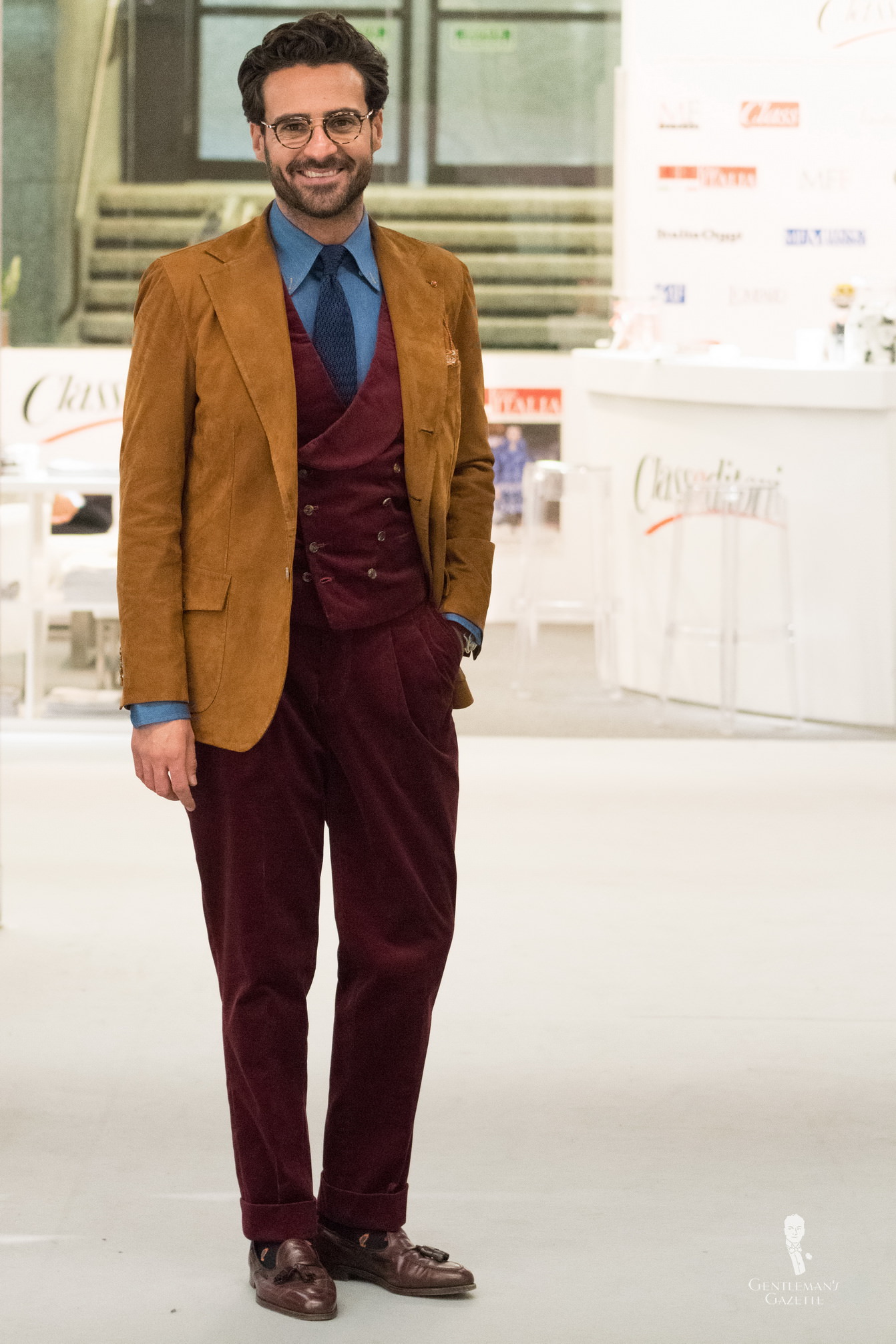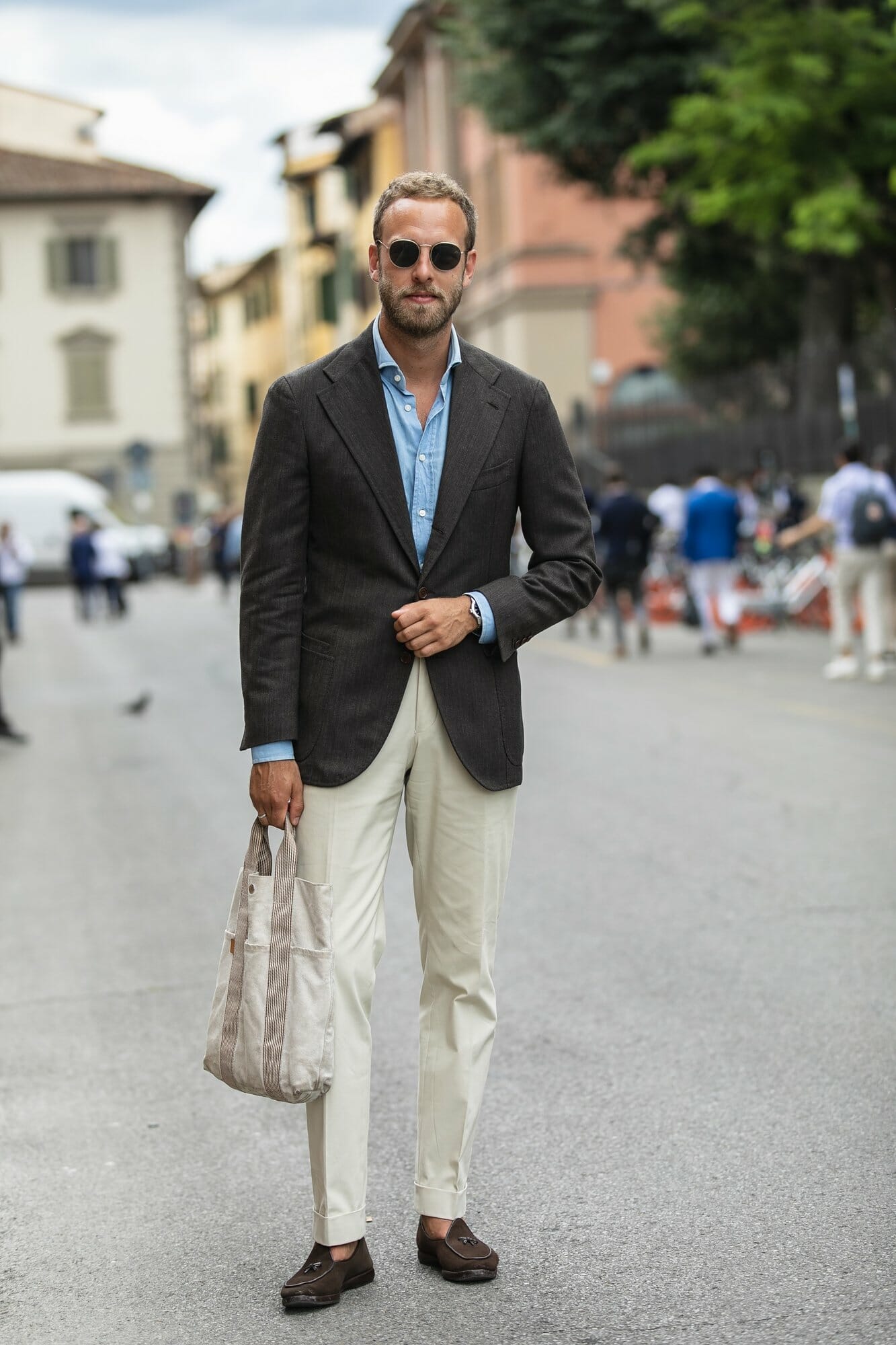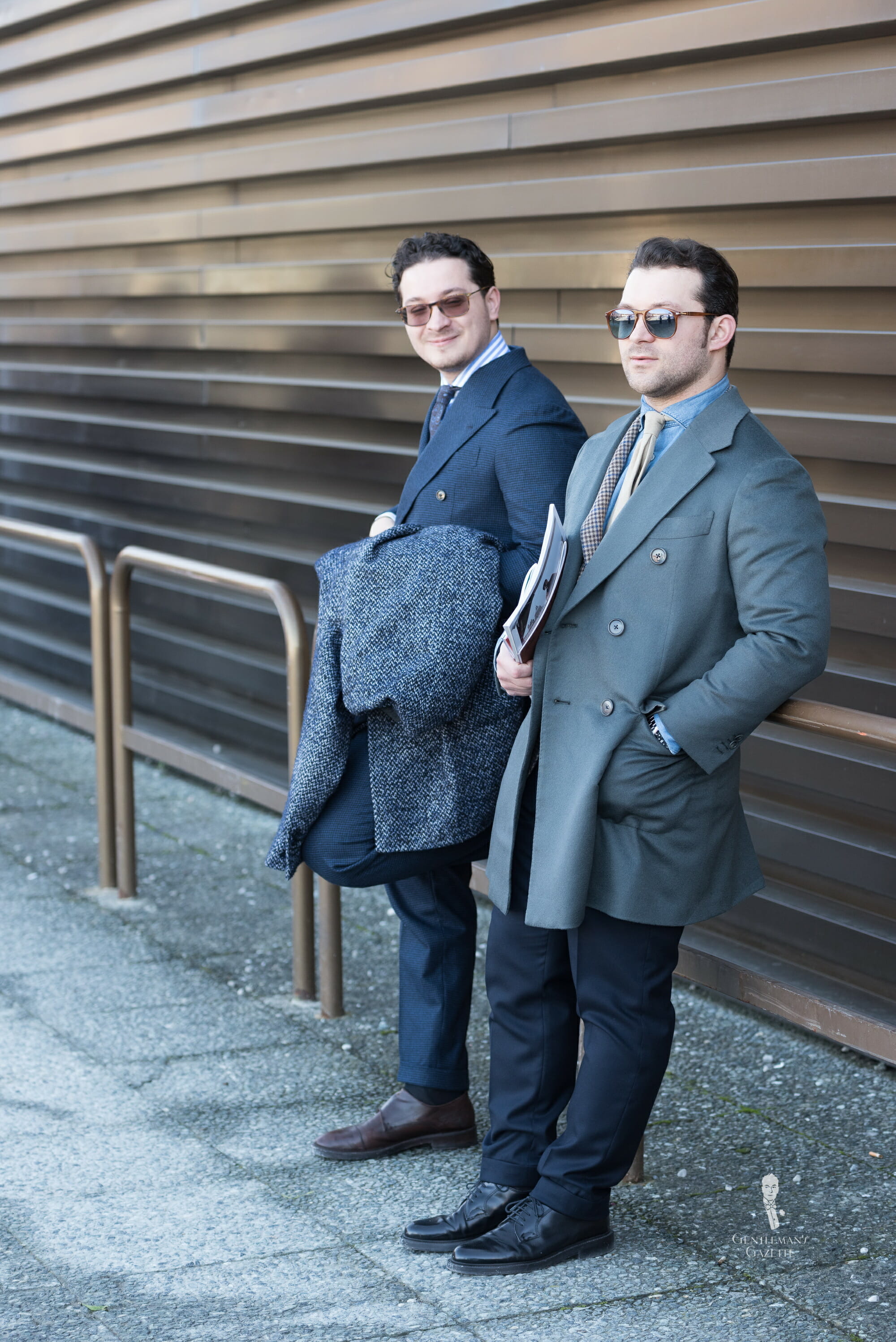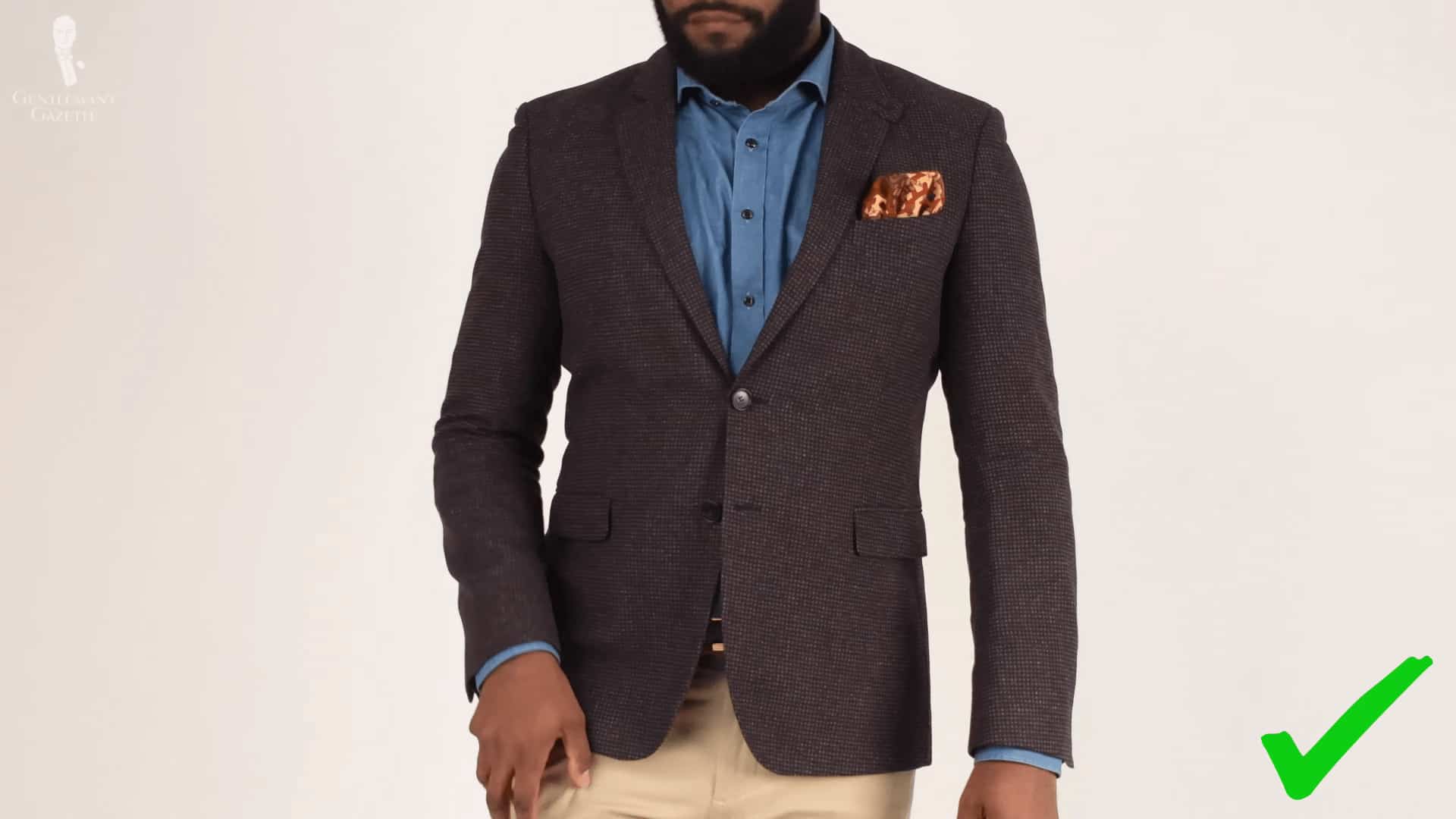The denim shirt finds its origins in workwear and seems far removed from the world of tailoring, yet it has recently been labeled the most versatile shirt for the modern man and the new white shirt byThe Rakemagazine. Is that really the case?
Its also one of ourten shirts every man should own. In this article, well examine the value of the denim shirt and how it can be worn in the world of classic style.
What is Denim?
Nowadays denim usually refers to a cotton twill fabric, meaning it has a diagonal weave made up of two threads in one direction (the weft) passing under two or more warp threads, though the diagonal appearance of the twill is quite subtle.
Denim exists in various weights, and shirts, especially fine shirting that can be worn with tailoring, would be lighter weight than the denim used for jeans. The name of the fabric originates from the French de Nimes, for the place where the weave originated, though it was first used extensively in Britain before it saw explosive popularity in the United States via jeans manufacturer Levi Strauss. Denim is usually thought of as being dyed blue with indigo, but it can appear in many colors.For example,Empress Mills in Lancashire has more than 40 shades of plain denims. The strength of denim is its durability, which made it the cloth of choice for laborers, farmers, and cowboys. This is owed to the properties of the weave.
By the same token, the affiliation of denim with workwear has traditionally kept it out of tailoring on the principle of dressing appropriately for the occasion. A man who was dressed up would not think of wearing work clothes, and at a time when ones dress was a strong indication of his social class a self-respecting gent who was not of the working class would debase his status by appearing to be one. In fact, because denim shirts were a traditional part of laborers garb it was responsible for the term blue-collar worker, which arose in the United States during the early 20th century. No single article of clothing has such a direct connection to workwear, which has presented a considerable obstacle to accepting the denim shirt as part of a tailored style.
Denim, in the form of jeans, also featured strongly as the uniform of the rock n roll counterculture that began in the 1950s. This was the start of the casual culture in which we are still mired today and stood in direct opposition to traditional mens style, which, again, seems to draw a distinct line between denim and formal menswear.
There may be some resistance to wearing a denim shirt as selling out to the trend of casualization. On the other hand, we can see it as a way of appropriating the fabric in the name of classic style.Furthermore, these days, the mixing of high and low style, formal and casual, has become commonplace in dressing, as the democratization of clothing has mirrored the supposed equalization of society.
Why Wear a Denim Shirt?
1. To accomplish a smart casual look
No matter what else you might hear, denim is always a way to dress down an outfit, so it is most suitable for those who want to wear tailoring but who dont want to come across as overdressed.
If you want to uphold classic mens style, you usually wouldnt wear it with a worsted wool business suit, much less a tuxedo, though the luxury shirtmakers Eton and Marol have each produced a denim shirt with a pleated front intended for this purpose. On occasions where formal evening wear or a suit is the dress code, dressing down immediately makes you stand out as the guy who flouts propriety and rebels against the norms to get attention. This would be more of a fashion statement than a way to maintain the traditional style.

Denim tuxedo shirts like these from Marol (left) and Eton (right) are definitely fashion-forward rather than classic style
Thus, the denim shirt is best for less formal tailoring like a cotton suit or a sport coat and odd trousers.

Atte Rytknen of Dress Like a wearing a British glen check pattern in an unstructured Italian jacket along with an American-style denim shirt.
Its an unfortunate fact that, these days, wearing a dress shirt, tie and jacket make you better dressed than most or all the people around you, so there are times when you may be looking for a way to blend in more while still maintaining your style principles. Denim can help with this. If you embrace the smart casual aesthetic, the denim shirt is a valuable option, perfect for a run to the supermarket or a weekend day out.
2. For all-season wear
The versatility attributed to the denim shirt is most accurately owed to the fact that you can wear it in any season. The texture of a denim shirt and its relative thickness lends itself to winter wear; however, its casual, relaxed style makes it appropriate for not-too-hot summer days if you have a lightweight version or a chambray. Of course, it can be worn anytime in between as well.
3. For elegant nonchalance
Its often said of a linen suit that the more you wear it the softer and more comfortable it gets. This is even more true of a denim shirt because its washed often and worn right on your skin. Just like some people talk about their favorite pair of jeans, youre likely to treat your denim shirt as a comfortable favorite. It will also fade some from its original color until it reaches a certain point, lending your garment a sprezzatura quality. Itll age into a particular sort of beauty.
What Kind of Denim Shirt Should You Wear?
Not all denim shirts are created equal, however. For wear with tailoring, you dont want a thick, distressed denim or one that hints in any way that it can be worn to a country music concert or rodeo. This means no pockets, especially not the double, button-flapped chest pockets of a Western shirt. Such shirts also have shoulder patches and a defined center placket where the buttons are.

A typical western-style denim shirt with shoulder patches, a heavy placket, and two chest pockets including flaps and buttons, something you would avoid with tailoring.
All of these render the shirt very casual. Similarly, avoid any sort of unusual washes. Nor should there be obvious contrast stitching, as these suggest jeans and are therefore too casual.

Aleks Cvetkovic with denim shirt on top of a turtleneck sweater
Go with a lighter-weight denim, something with a higher thread count and a tight weave that creates a smooth finish. Shirts made of high-quality denim can be recognized by their slight sheen, which makes them look more refined. These are found most readily at a smaller menswear brand like Proper Cloth rather than department stores, or can be obtained from European makers like SuitSupply, Boggi Milano and Pini Parma. Japanese mills are renowned for their denim, so if you can find a shirt made of fabric from Japan, it will usually fill the bill.
Though not denim, chambray is a close cousin of the fabric in appearance and also shares its origins as workwear. So, if you really want a finer material with a similar look, you can cheat and wear chambray instead, which is usually sold in mid-blue as well. The difference is that chambray is usually thinner and lighter than denim, being made of a simple weave instead of the double-threaded twill of denim. Thus, it looks more elegant as a shirt, which accounts for its popularity in menswear. Chambray isnt as durable as denim, but since youre not wearing it for manual labor, this doesnt matter.
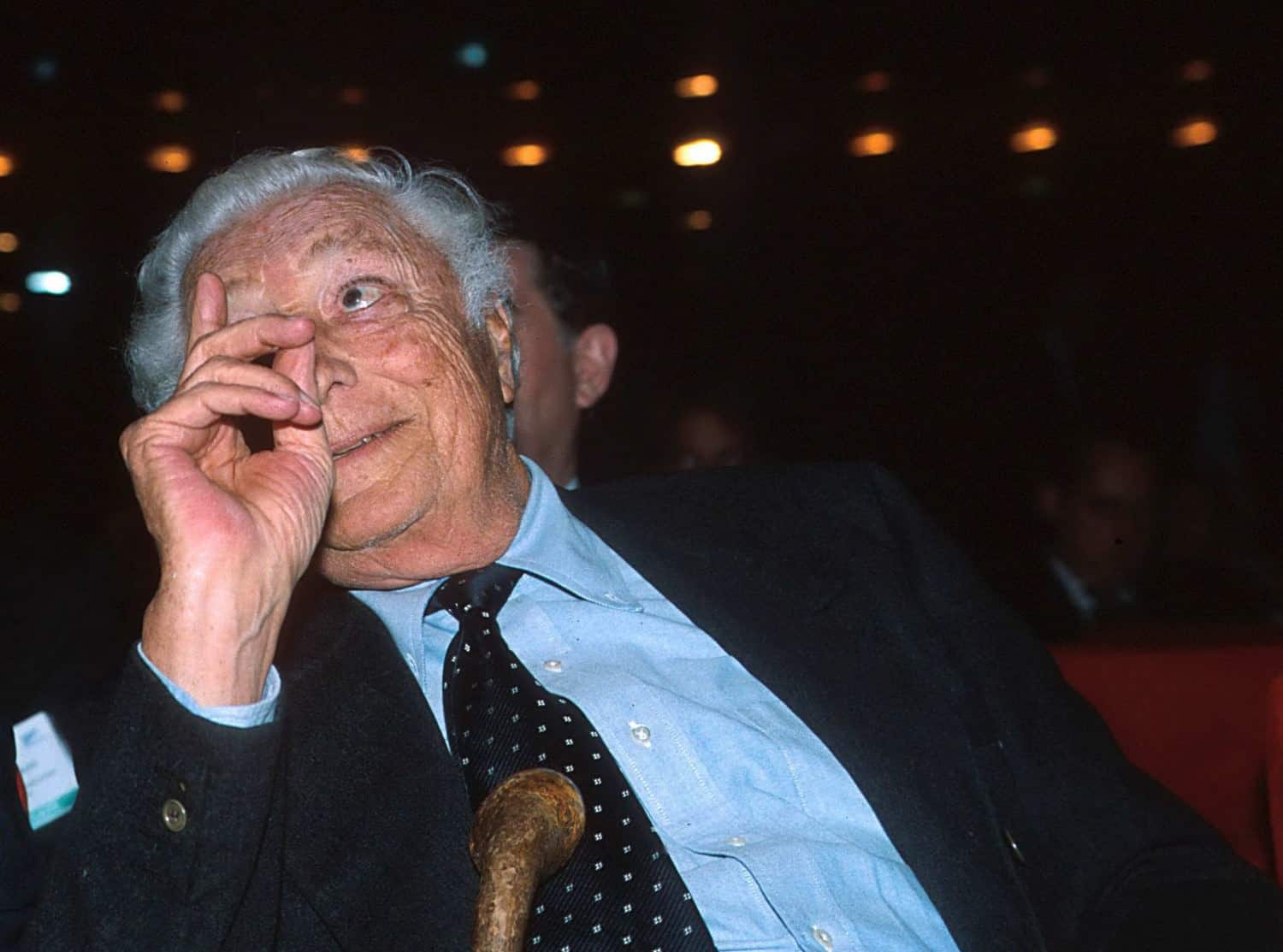
Gianni Agnelli in dark grey suit with button-down collar shirt and cane
What to Wear with a Denim Shirt
In the image above, Gianni Agnelli wears a silk business tie with chambray, but Agnelli was known for daring combinations of casual and formal wear like hiking boots and a suit as part of hissprezzaturastyle, not something everyone can pull off. Instead, try similarly casual textures like wool-linen blends and basketweaves in summer orflannelin winter either as a suit or sport coat.
Because of its casual nature, a denim shirt is perfect when going tieless with a jacket and odd trousers. Indeed, most pictures youll find of denim shirts will be styled without a tie. However, if you want to wear a necktie or bow tie, choose casual fabrics to match. Ties in knitted silk, linen, cotton, and shantung or blends (silk-linen, wool-cotton, etc.) pair best with the texture and informality of a denim shirt. If you truly want to wear a more formal silk tie, try a large-weave (garza grossa) grenadine because its visible weave will stand up to the texture of the shirt. Whatever you do, avoid wearing a tie lighter than your shirt as this combination usually makes you look like a twenty-year-old going to a club; if wearing a tie, select a shirt that is no darker than mid-blue and wear a dark tie.
Colors with Denim Shirts
Youll probably start and stick with mid-blue as your denim color since the vast majority of shirts sold come in this tone. You may be able to find some darker indigo ones, but they are only as versatile as a regular navy cotton shirt would be, whereas mid-blue can always be combined with more colors and more easily with neckties. Keep in mind when you select a color that most denim will fade to a certain point when it is washed. A popular approach when wearing a mid-blue denim shirt is to pair it with other shades of blue, like a navy blue jacket and tie, with gray, whiteor off-white pants to complete the look, depending on the season.
Treat a denim shirt like a more relaxed version of your standard blue dress shirt and pair it with the traditional menswear colors that youd use with blue, like brownor gray. Ties and pocket squares in thered ororange family work beautifully against a denim shirt.Green sport coats tend to be underappreciated because men find them rather difficult to coordinate, but blue denim creates an effortless pairing that opens a gateway into a new color family.
For more sophisticated outfits, a jacket in a coordinating color with a blue windowpanecheck is your best friend; these give you an added layer of sophistication by carrying the blue of the shirt into the jacket in a subtle way.

Denim shirts worn with jackets containing blue over plaid patterns by paulluxsartoria and Pini Parma.
When you wear a denim shirt, it does tend to stand out as the center of attention, so it should be treated that way, which means keeping the rest of your look simple.
Double Denim
Lastly, something must be said on the possibility of wearing a denim shirt with another denim item, most commonly a pair of jeans. A lot of mockery has been directed at the so-called Canadian Tuxedo or double denim, which was a popular and polarizing! casual look in the 90s. The good news is that, though always an advanced style move, its actually easier to wear two articles of denim following traditional style than to do it casually. A sport coat in another material helps tone down the use of denim.
There are several other keys to success with double denim. The first is, again, to choose finer denims: smooth shirts and selvedge jeans. Secondly, make sure you create contrast through two distinct colors of denim: your mid-blue shirt with a dark indigo pair of jeans.
Lastly, its probably best to stick with gradations of blue, again to beat back the denim. Jeans are not a popular choice among many Gentlemans Gazette readers, but those who venture in this direction now have another option.
Conclusion
Even if denim has modest origins in clothes made for hard work, it definitely has a place with contemporary tailored menswear if done right. The ease of care, comfortable softness, seasonal versatility and mid-blue color of a denim shirt are elements that contribute to its appeal. I originally was not enamored of denim shirts, but Ive since been converted and am more likely to wear a denim shirt with navy chinos and a sport coat more than I wear a pair of jeans. Whats your view of denim shirts? Is it a wardrobe essential? How do you make it work with tailoring? Tell us in the comments.






